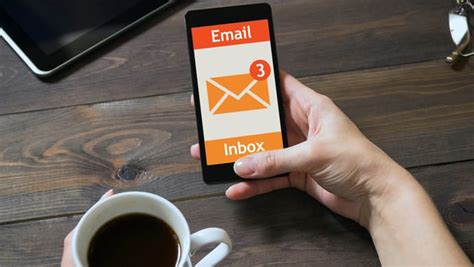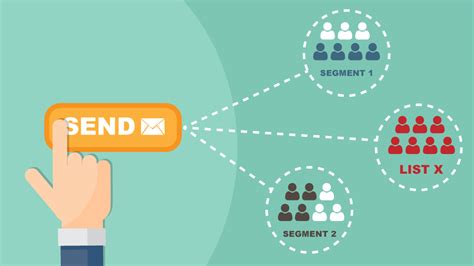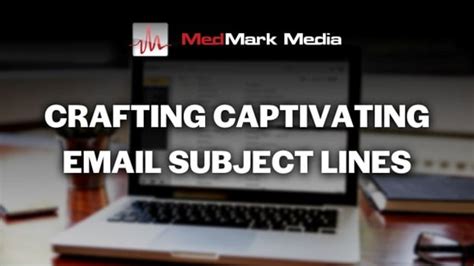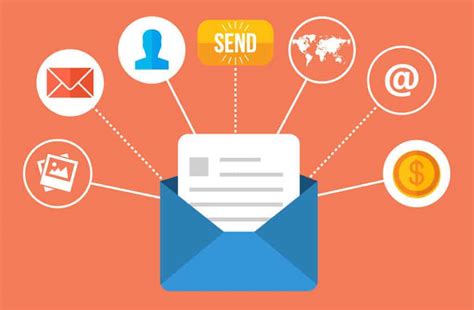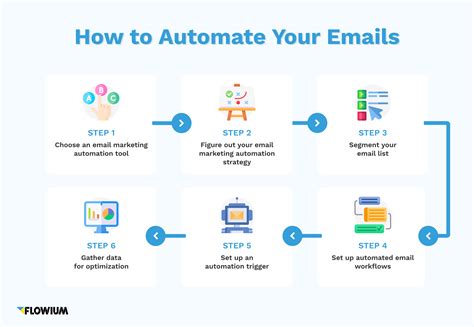Email marketing is not just a buzzword; it's an artful science that can skyrocket your business success. In today's digital world, where competition is fierce and attention spans are shorter than ever, capturing your audience's interest is paramount. But how can you ensure that your email campaigns stand out amidst the noise and entice recipients to take action?
Discover the ultimate secrets to crafting compelling email campaigns that resonate with your target audience. From creating attention-grabbing subject lines to nurturing long-term customer relationships, this article unveils the top ten game-changing strategies that will revolutionize your email marketing approach.
Unleash the power of persuasive storytelling by making your emails more than just promotional messages. Engage your readers with carefully crafted narratives that evoke emotions and build a genuine connection. Whether you're launching a new product, promoting a sale, or simply sharing valuable insights, infuse your emails with authenticity and relevance that leaves a lasting impression.
The Significance of Email Marketing Campaigns in Achieving Business Success
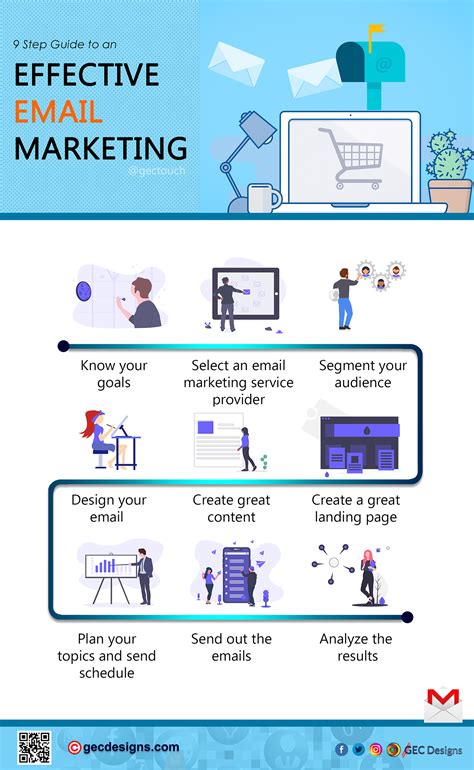
Email marketing plays a pivotal role in driving the success of a business. By utilizing the power of personalized and targeted communication, businesses can effectively engage with their target audience, build brand awareness, and ultimately increase sales and revenue. Implementing a strong email marketing campaign allows businesses to establish a direct and intimate connection with customers, enabling them to convey their message, promote their products or services, and cultivate long-term customer relationships.
1. Enhanced Reach and Targeting: With email marketing campaigns, businesses can reach a wide range of customers worldwide and target specific demographics, ensuring that their messages are delivered to the right people at the right time.
2. Cost-Effectiveness: Compared to other marketing channels, email marketing campaigns are highly cost-effective. They eliminate the need for printing and postage costs, allowing businesses to directly communicate with customers at a fraction of the cost.
3. Personalization and Customization: Email marketing campaigns provide businesses with the opportunity to tailor their messages to individual customers. By segmenting their email lists and personalizing content based on customer preferences and behavior, businesses can significantly increase engagement and conversion rates.
4. Measurability and Analytics: Email marketing campaigns offer extensive measurability and analytics, enabling businesses to track the performance of their campaigns in real-time. Through comprehensive data analysis, businesses can continuously optimize their strategies and improve ROI.
5. Automation and Efficiency: The use of email marketing automation tools allows businesses to streamline their campaigns and save valuable time. Automated workflows, such as welcome emails, abandoned cart reminders, and personalized recommendations, enhance the customer experience and drive conversions.
6. Building Customer Relationships: Email marketing campaigns enable businesses to nurture and strengthen relationships with their customers. By delivering relevant and valuable content, businesses can establish themselves as trusted advisors and create brand loyalty.
7. Increased Website Traffic: A well-executed email marketing campaign can drive substantial traffic to a business's website. By strategically including relevant links and calls-to-action, businesses can encourage recipients to visit their website, explore their offerings, and make purchases.
8. Mobile-Friendly Communication: In today's mobile-dominated world, email marketing campaigns provide businesses with a platform to reach customers on their preferred devices. Optimizing emails for mobile ensures seamless user experiences and higher engagement rates.
9. A/B Testing and Optimization: Email marketing campaigns allow businesses to experiment with different strategies and content. By conducting A/B tests on subject lines, email designs, and CTAs, businesses can identify what works best for their audience and continually improve their campaign performance.
10. Compliance with Data Privacy and Regulations: Implementing effective email marketing campaigns requires businesses to comply with data privacy regulations, such as obtaining necessary permissions and providing unsubscribe options. By adhering to these regulations, businesses can build trust with customers and foster a positive brand image.
Improving Engagement and Boosting Brand Visibility: Strategies for Effective Email Marketing
Engaging customers and enhancing brand visibility are crucial aspects of successful email marketing campaigns. By implementing the right strategies, businesses can strengthen their relationships with customers and increase the visibility of their brand. In this section, we will explore several effective techniques to improve customer engagement and enhance brand visibility through email marketing.
Key Factors to Consider Before Launching an Email Marketing Campaign
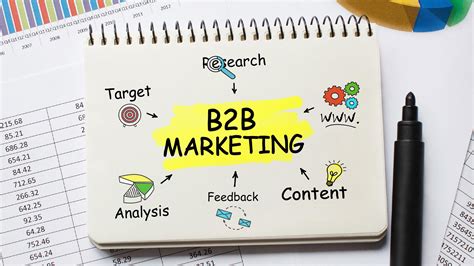
Introduction: Before embarking on any email marketing campaign, it is crucial to carefully evaluate several key factors that can greatly influence its success. By taking the time to consider these essential elements, you can effectively plan and strategize to ensure that your campaign achieves optimal results.
1. Target Audience: Assessing your target audience is vital as it enables you to tailor your campaign to their specific needs and preferences. Recognizing their demographics, interests, and behaviors can help you craft personalized and relevant content that resonates with your recipients.
2. Goals and Objectives: Clearly defining your goals and objectives is crucial for outlining the direction and purpose of your email marketing campaign. Whether it's to increase brand awareness, drive website traffic, or boost sales, these objectives will help guide your decision-making process throughout the campaign.
3. Email List Quality: Building a high-quality email list is one of the fundamental pillars of a successful email marketing campaign. Ensure that your subscribers have willingly opted-in and regularly engage with your emails to maximize the effectiveness of your campaign.
4. Email Content and Design: The content and design of your emails play a significant role in capturing and retaining the attention of your recipients. Create compelling and visually appealing emails, keeping in mind the importance of concise yet engaging messages that drive action.
5. Call to Action: Every email in your campaign should have a clear and compelling call to action (CTA). The CTA serves as a prompt for your recipients to take the desired action, such as making a purchase, signing up for an event, or subscribing to a newsletter.
6. Email Frequency and Timing: Striking the right balance between email frequency and timing is crucial to maintain the interest and engagement of your subscribers without overwhelming them. Test different send times and frequencies to find the optimal schedule for your audience.
7. Personalization and Segmentation: Personalization and segmentation allow you to divide your email list into targeted groups and deliver highly tailored content. By addressing individual recipients' needs and preferences, you can increase relevancy and improve the overall effectiveness of your campaign.
8. Mobile Optimization: With the increasing use of mobile devices for email consumption, ensuring that your emails are mobile-responsive and optimized for various screen sizes is essential. Neglecting mobile optimization can result in a poor user experience and hinder the effectiveness of your campaign.
9. Metrics and Tracking: Implementing robust tracking mechanisms and analyzing relevant metrics is crucial to evaluate the success of your email marketing campaign. Regularly monitor key performance indicators, such as open rates, click-through rates, and conversions, to measure your campaign's effectiveness and make data-driven adjustments.
10. Compliance with Legal Regulations: Familiarize yourself with the legal regulations governing email marketing, such as the CAN-SPAM Act or GDPR, and ensure that your campaign complies with these requirements. Protect your brand's reputation by obtaining necessary permissions and respecting subscribers' privacy rights.
Conclusion: Before diving into an email marketing campaign, carefully considering these key factors will set the stage for a successful and impactful campaign. By incorporating these elements into your planning process, you can maximize the effectiveness of your email marketing strategy and achieve your desired results.
Understanding Your Target Audience and Setting Objectives for Your Email Marketing Campaign
One of the most crucial steps in creating successful email marketing campaigns is identifying your target audience and defining clear objectives for your campaign. By understanding who your audience is and what you hope to achieve, you can tailor your messages to effectively reach and engage your intended recipients.
1. Identify Your Target Audience: Begin by conducting market research to determine who your ideal customers are. Analyze demographics, psychographics, and behavior patterns to gain insights into their preferences, needs, and interests.
2. Segment Your Audience: Once you understand your target audience, divide them into different segments based on common characteristics. This allows you to create more personalized and relevant content for each group, increasing the chances of engagement and conversions.
3. Set Specific Goals: Clearly define the objectives you want to achieve with your email marketing campaign. Whether it's increasing brand awareness, driving website traffic, promoting a new product, or generating leads, setting specific goals helps you focus your efforts and measure success effectively.
4. Establish Key Performance Indicators (KPIs): Determine the metrics you will use to track the success of your campaign. Common KPIs include open rates, click-through rates, conversion rates, and revenue generated. Monitoring these metrics allows you to gauge the impact and adjust your strategies accordingly.
5. Craft Compelling Messages: Tailor your email content to resonate with your target audience. Use language, tone, and messaging that aligns with their preferences and interests. Create captivating subject lines and captivating visuals to grab their attention and drive engagement.
| Benefits of Identifying Target Audience and Defining Campaign Objectives |
| 1. Enhanced Personalization: By understanding your target audience, you can create highly personalized content that resonates with their specific needs and interests, increasing their likelihood of taking action. |
| 2. Improved Engagement: When your emails are targeted and relevant, recipients are more likely to open, click through, and engage with your content, leading to higher conversion rates. |
| 3. Better ROI: By focusing your efforts on a defined audience and clear objectives, you can optimize your email marketing campaigns and improve your return on investment (ROI) by maximizing conversions and minimizing wasted resources. |
| 4. Data-Driven Decision Making: By tracking relevant KPIs, you have access to valuable data that can inform future strategies and help you refine your email marketing campaigns for even greater effectiveness. |
By identifying your target audience and defining campaign objectives, you can create more impactful and successful email marketing campaigns. Understanding who you are targeting and what you hope to achieve enables you to tailor your messages, optimize your efforts, and drive desired results.
Developing an Exceptional Database to Enhance the Effectiveness of Your Email Initiatives
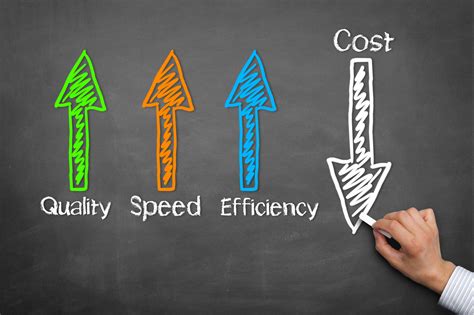
Establishing a top-notch list of email contacts plays a pivotal role in maximizing the impact of your email marketing efforts. The quality of your database directly influences the success of your campaigns and allows for targeted communication with your audience.
To build a high-quality email list, it is crucial to implement a strategic approach that focuses on fostering organic growth and ensuring the relevance and engagement of your subscribers. By employing the following effective techniques, you can enhance your database and achieve greater success in your email campaigns:
- Optimize your website's opt-in forms: Incorporate user-friendly opt-in forms across your website to make it effortless for visitors to subscribe to your email updates. Offering incentives or exclusive content can entice users to become subscribers.
- Run targeted lead generation campaigns: Develop compelling lead generation campaigns to attract potential subscribers who are genuinely interested in your offerings. Leverage social media platforms, webinars, or contests to create opportunities for collecting email addresses.
- Segment your audience: Categorize your subscribers based on their preferences, behavior, or demographics to ensure tailored communication. Segmentation allows you to send personalized emails that resonate with each segment, resulting in higher open and click-through rates.
- Create compelling and valuable content: Offer valuable content that educates, entertains, or solves problems for your subscribers. Well-crafted newsletters, industry insights, or exclusive discounts can pique their interest and keep them engaged.
- Utilize double opt-ins: Implement a double opt-in process to verify the authenticity of subscribers' email addresses and confirm their consent to receive emails from you. This approach helps eliminate invalid or inactive email addresses and maintains a clean and engaged database.
- Regularly clean your list: Purge your email list of inactive or unengaged subscribers to maintain a high-quality database. Regularly send re-engagement campaigns and remove subscribers who show no interest in your emails to avoid potential deliverability issues.
- Provide easy unsubscribe options: Make it simple and hassle-free for recipients to unsubscribe from your emails. Offering effortless opt-out mechanisms demonstrates respect for subscribers' choices and reduces the likelihood of spam complaints.
- Encourage social sharing: Incorporate social sharing buttons in your emails to encourage subscribers to share your content with their network. This can extend your reach and attract new subscribers from trusted sources.
- Implement email preference centers: Offer subscribers the ability to customize their email preferences. Allowing them to select their preferred frequency, content types, or interests ensures a higher level of engagement and satisfaction.
- Analyze and optimize: Continuously evaluate the performance of your email campaigns by leveraging analytics tools. Analyze open rates, click-through rates, and conversion rates to identify areas for improvement and optimize your strategies accordingly.
Achieving remarkable outcomes from your email campaigns undoubtedly requires a solid foundation of engaged and receptive subscribers. By incorporating these techniques into your email list building approach, you can enhance the effectiveness of your future campaigns and achieve your marketing goals with greater impact.
Strategies for Gathering and Categorizing Customer Data
In order to run a successful email marketing campaign, it is crucial to collect and segment customer data effectively. By implementing the right strategies for gathering and categorizing customer information, businesses can personalize their email marketing messages and target the right audience with relevant content.
- Conduct Surveys: One approach to acquiring customer data is by conducting surveys. This enables businesses to gather valuable insights on customer preferences, interests, and demographics. Surveys can be disseminated through various channels, such as email, social media, or embedded on websites.
- Leverage Website Analytics: Another powerful tool for collecting customer data is website analytics. By analyzing metrics like page views, bounce rates, and conversion rates, businesses gain insights into customer behavior and preferences. This data can help tailor email marketing campaigns to specific customer segments.
- Utilize Online Forms: Strategically placed online forms, such as subscription forms, contact forms, and download forms, can be used to capture customer information. These forms should be designed in a user-friendly manner, making it easy for customers to provide their details voluntarily.
- Track Customer Interactions: Monitoring customer interactions across various touchpoints, such as social media, emails, and website visits, can provide valuable data for segmentation. By tracking these interactions, businesses can identify patterns and preferences, allowing them to target customers with relevant content.
- Utilize Customer Feedback: Customer reviews, comments, and feedback provide valuable information for understanding customer preferences and improving marketing strategies. Utilizing this feedback enables businesses to segment their customer base and personalize their email campaigns accordingly.
- Segment Based on Purchase History: Categorizing customers based on their past purchases can be an effective way to personalize email marketing campaigns. By tailoring messages to match their previous buying behavior, businesses can increase engagement and drive conversions.
- Implement Customer Loyalty Programs: Loyalty programs not only encourage repeat purchases but also provide opportunities to gather valuable customer data. By offering incentives for customers to join these programs, businesses can collect information that helps them segment their target audience more effectively.
- Engage in Social Listening: Monitoring social media platforms for customer discussions, feedback, and sentiments can provide valuable insights into their preferences and interests. Through social listening, businesses can adapt their email marketing strategies to align with customer demands.
- Create Customer Personas: Developing customer personas based on common characteristics and behaviors allows businesses to segment their target audience more effectively. These personas help in crafting personalized email messages that resonate with the specific needs and interests of different customer segments.
- Respect Data Privacy: It is essential to prioritize data privacy and ensure compliance with relevant regulations. By implementing strong data protection measures and obtaining necessary permissions, businesses can build trust with their customers and maintain the integrity of their email marketing campaigns.
By implementing these strategies for gathering and categorizing customer data, businesses can enhance the effectiveness of their email marketing campaigns. Personalized and targeted email messages result in higher engagement, improved customer satisfaction, and ultimately, increased conversions.
Crafting Engaging Email Content to Drive Interaction
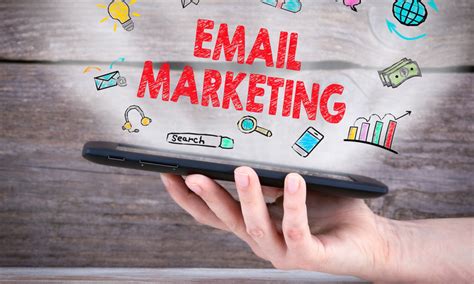
In this section, we will explore the essential aspects of creating captivating email content that encourages recipients to interact with your message. With carefully crafted language and persuasive techniques, you can seize the attention of your audience and motivate them to take the desired action.
1. Master the art of storytelling: Utilize the power of narratives to forge an emotional connection with your readers. Engaging stories can captivate their attention and make your email memorable.
2. Personalize your emails: Tailor your content according to the preferences and characteristics of your target audience. By addressing your readers directly and providing relevant information, you can enhance engagement and make your email feel more personal.
3. Create compelling subject lines: Craft concise and curiosity-inducing subject lines that stand out in crowded inboxes. A well-crafted subject line can entice recipients to open your email and delve into its content.
4. Use persuasive language: Select words and phrases that elicit emotions and provoke action. Clever usage of power words can influence your readers' decision-making process and encourage them to engage with your email campaign.
5. Incorporate visual elements: Incorporate eye-catching images or graphics that complement your email content. Visual elements can help convey your message effectively and leave a lasting impression on your audience.
6. Keep it concise and scannable: Ensure that your email is easy to read and digest by using short paragraphs, bullet points, and headings. Make it effortless for your audience to scan your email quickly and find the information they need.
7. Implement a clear call-to-action: Direct your readers towards the desired action by using a prominent and persuasive call-to-action button or hyperlink. Make it evident what action you want them to take and emphasize the benefits of doing so.
8. Offer valuable incentives: Provide exclusive offers, discounts, or valuable resources to create a sense of urgency and encourage engagement. Incentives can entice your readers to interact and increase the chances of conversion.
9. Test and optimize: Continuously evaluate the performance of your emails and make data-driven adjustments. Test different variations of your content to optimize engagement rates and ensure the effectiveness of your email marketing campaign.
10. Maintain a consistent brand voice: Develop a distinctive brand voice that resonates with your target audience. Consistency in tone and messaging across your email campaigns builds trust and loyalty among your subscribers.
| Key Takeaways |
|---|
| 1. Craft engaging stories to connect with your audience emotionally. |
| 2. Personalize your emails to make them feel more individualized. |
| 3. Create compelling subject lines that entice recipients to open your emails. |
| 4. Utilize persuasive language to influence readers' actions. |
| 5. Incorporate visual elements to enhance the impact of your message. |
| 6. Keep your email concise and scannable for easy readability. |
| 7. Implement clear call-to-action buttons or hyperlinks. |
| 8. Offer valuable incentives to drive engagement and conversion. |
| 9. Continuously test and optimize your email content. |
| 10. Maintain a consistent brand voice for trust and loyalty. |
FAQ
How can I make my email marketing campaigns more effective?
There are several ways to make your email marketing campaigns more effective. First, you need to have a clear goal and define your target audience. Then, you should personalize your emails and make them relevant to your subscribers. Additionally, you should pay attention to the timing and frequency of your emails. Finally, make sure to analyze the results of your campaigns and continuously improve your strategy.
What are the key elements of a successful email marketing campaign?
A successful email marketing campaign should have a compelling subject line that grabs the attention of the reader. The content of the email should be well-written, concise, and engaging. It should provide value to the subscribers and include a clear call to action. Additionally, the design and layout of the email should be visually appealing and mobile-friendly. Lastly, it is important to track the performance of the campaign and make necessary adjustments.
How can I increase the open rates of my email marketing campaigns?
To increase the open rates of your email marketing campaigns, you can try several strategies. First, make sure your subject line is compelling and creates a sense of urgency or curiosity. You can also segment your email list and send targeted emails to specific groups of subscribers. Additionally, try experimenting with the timing and frequency of your emails. Finally, regularly clean your email list to remove inactive subscribers.
What are some common mistakes to avoid in email marketing campaigns?
There are a few common mistakes to avoid in email marketing campaigns. First, avoid using spammy or misleading subject lines that can damage your reputation. Second, do not overload your emails with excessive content or too many images. Keep the emails simple and focused. It is also important to check for spelling and grammar errors before sending. Lastly, do not neglect the importance of testing and optimizing your emails for different devices and email clients.


